- Choosing the Right Ampel Plants
- 1. Light Requirements
- 2. Growth Habits
- 3. Watering Needs
- 4. Color and Texture
- 5. Maintenance Requirements
- 6. Compatibility with Other Plants
- 7. Allergies and Pets
- Selecting the Perfect Hanging Containers
- Consider Size and Shape
- Material Matters
- Drainage and Watering
- Visual Appeal
- Essential Care Tips for Ampel Plants
- 1. Choosing the right location
- 2. Watering
- 3. Fertilizing
- 4. Pruning
- 5. Support and Hanging
- 6. Dealing with pests
- 7. Temperature and humidity
- 8. Repotting
- Design Ideas for Hanging Ampel Plants
- Enhancing Your Outdoor Space with Ampel Plants
- Introduction
- Choosing the Right Ampel Plants
- Creating Hanging Designs
- Caring for Your Ampel Plants
- Conclusion
- Mixing and Matching Ampel Plants for Visual Impact
- 1. Consider Colors
- 2. Play with Textures
- 3. Vary Growth Habits
- 4. Mix and Match Container Styles
- 5. Experiment and Have Fun!
- Creating a DIY Ampel Plant Display
- Choosing Your Ampel Plants
- Selecting the Right Containers
- Arranging Your Ampel Plants
- Maintaining Your DIY Ampel Plant Display
- Troubleshooting Common Issues with Ampel Plants
- 1. Overwatering
- 2. Underwatering
- 3. Lack of Light
- 4. Pest Infestations
- 5. Nutrient Deficiencies
- 6. Incorrect Temperature or Humidity
- 7. Incorrect Pruning
- Conclusion
- Q&A:
- What are ampel plants and how can they be used in hanging designs?
- What are some popular ampel plants for hanging designs?
- How do you care for ampel plants in hanging designs?
- Can ampel plants be grown indoors?
- What are some tips for creating stunning hanging designs with ampel plants?
- Video: Amazing Hanging Plants Ideas | Indoor Hanging Plants and Planters Making at Home //GREEN PLANTS
Adding ampel plants to your indoor or outdoor space is a great way to create stunning hanging designs. Ampel plants are known for their beautiful cascading foliage, which adds visual interest and a touch of greenery to any space. Whether you have a small balcony or a large garden, incorporating ampel plants into your design can transform your space into a lush and inviting oasis.
One of the best things about ampel plants is their versatility. They can be grown indoors or outdoors, and they come in a wide variety of shapes, sizes, and colors. From trailing vines to hanging baskets, there is an ampel plant that will suit every design aesthetic. Plus, they are relatively low-maintenance, making them perfect for both novice and experienced gardeners.
To create stunning hanging designs with ampel plants, it’s important to consider the overall aesthetic you want to achieve. Do you prefer a bold and colorful look, or are you more drawn to a more minimalist and monochromatic design? Once you have a vision in mind, you can start selecting ampel plants that will complement your desired style.
For a bold and vibrant look, consider incorporating ampel plants with bright flowers or foliage. Plants like fuchsia, petunias, and begonias are great options. Their cascading growth habit will create a stunning display of color and texture, drawing the eyes upward and adding visual interest to your space.
On the other hand, if you prefer a more understated and minimalist design, opt for ampel plants with delicate foliage and muted colors. Plants like string of pearls, pothos, and ferns work well in this type of design. Their trailing vines and subtle hues will create a calming and serene atmosphere, perfect for creating a relaxing outdoor space or a tranquil indoor oasis.
Choosing the Right Ampel Plants
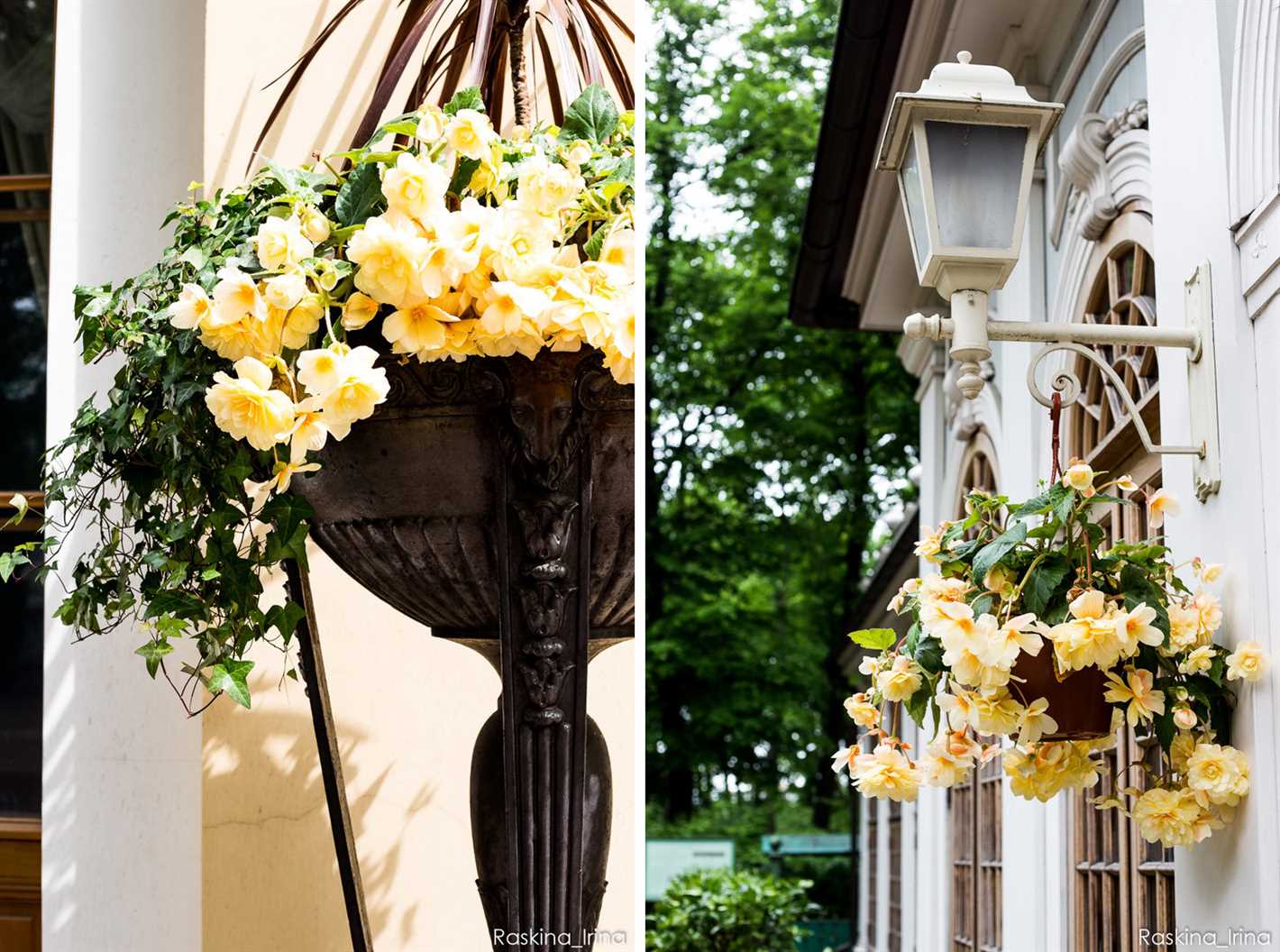
When it comes to creating stunning hanging designs with ampel plants, choosing the right plants is crucial. Here are some factors to consider when selecting ampel plants:
1. Light Requirements
One of the most important factors to consider is the light requirements of the ampel plants. Some plants thrive in direct sunlight, while others prefer shade or partial shade. Make sure to choose plants that are suitable for the lighting conditions in your desired hanging location.
2. Growth Habits
The growth habits of ampel plants can vary significantly. Some plants have trailing vines that hang down beautifully, while others have more compact growth habits. Consider the space you have available and the overall look you want to achieve when selecting plants with the right growth habits.
3. Watering Needs
Plants have different watering needs, and it’s important to select ampel plants that have similar moisture requirements. This will make it easier to care for your hanging designs and ensure that all plants in the arrangement thrive.
4. Color and Texture
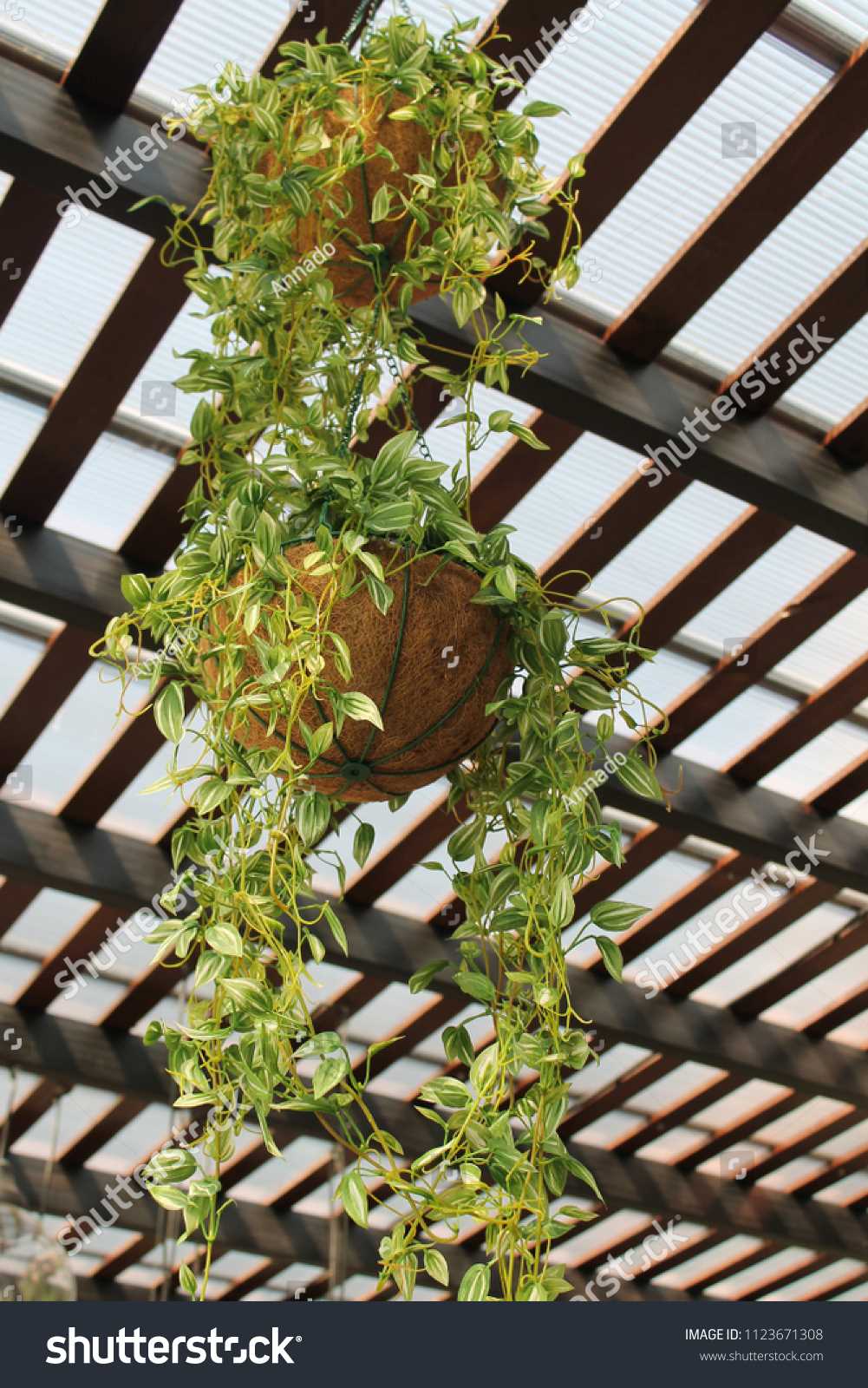
Ampel plants come in a wide range of colors and textures, which can add visual interest to your hanging designs. Consider the color scheme of your overall space and choose plants that complement the aesthetic. Mixing plants with different textures can also create a visually appealing arrangement.
5. Maintenance Requirements
Some ampel plants require more maintenance than others. Consider your gardening skills and the amount of time you can dedicate to care for the plants. If you prefer low-maintenance plants, choose varieties that are more forgiving and require less attention.
6. Compatibility with Other Plants
If you plan to mix different types of ampel plants in your hanging designs, it’s important to consider their compatibility. Some plants may have specific growth requirements or may not thrive when planted together. Do thorough research on the plants you want to combine to ensure they can coexist harmoniously.
7. Allergies and Pets
Take into account any allergies you or your household members may have to certain plants. Some ampel plants may release pollen or have scents that can trigger allergic reactions. Additionally, consider the safety of your pets when selecting plants, as some varieties may be toxic to animals.
By considering these factors, you can choose the right ampel plants for your hanging designs and create stunning displays that will enhance your space.
Selecting the Perfect Hanging Containers
When it comes to creating stunning hanging designs with ampel plants, selecting the right containers is essential. The container you choose will not only determine the overall look of your hanging arrangement but also play a crucial role in the maintenance of your plants.
Consider Size and Shape
The first thing to consider when selecting a hanging container is the size and shape. It’s important to choose a container that provides enough space for the roots to grow while still being visually appealing. If the container is too small, it can restrict the growth of the plants and impact their health.
Additionally, consider the shape of the container. Some ampel plants have trailing or cascading growth habits, so a container with a wider opening can better accommodate their natural growth patterns.
Material Matters
The material of the hanging container is another important factor to consider. Different materials have different properties, which can affect the health and well-being of your ampel plants.
Plastic containers are lightweight and ideal for hanging arrangements as they are easy to handle and can withstand outdoor conditions. They also provide good insulation, preventing rapid temperature fluctuations in the soil.
On the other hand, ceramic or terracotta containers can add an element of elegance and style to your hanging design. However, they tend to be heavier and can break if accidentally dropped. They also provide less insulation, making the soil more prone to temperature changes.
Drainage and Watering
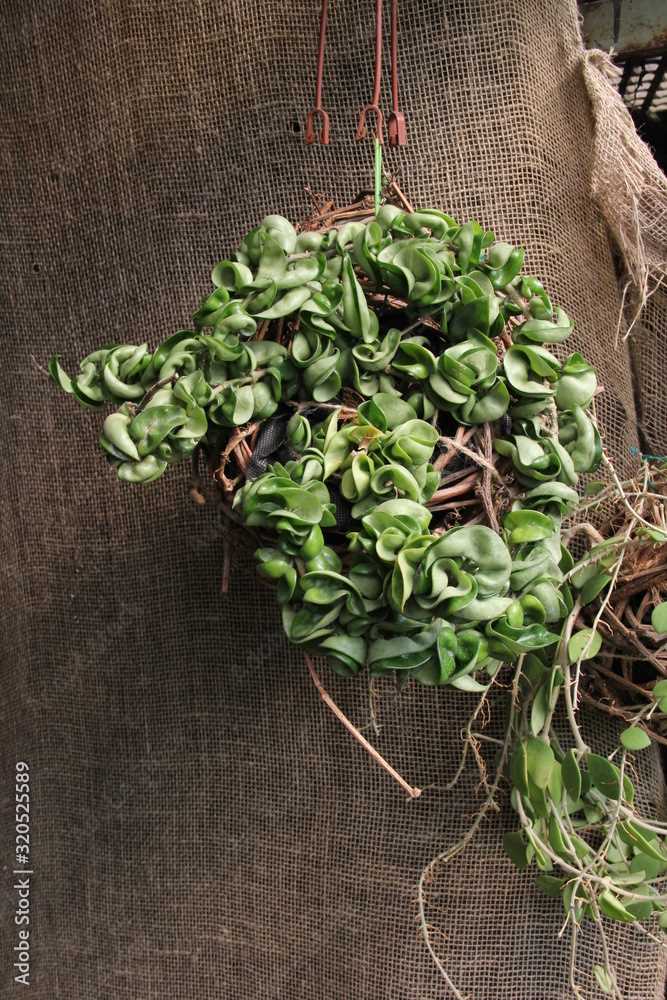
Proper drainage is crucial for the health of your ampel plants. When selecting a hanging container, ensure that it has adequate drainage holes to allow excess water to escape. This will prevent waterlogging and the risk of root rot.
Similarly, consider how easy it is to water the plants in the chosen container. Some hanging containers have a built-in watering system or a detachable tray, making it easier to water the plants without causing a mess.
Visual Appeal
Finally, do not forget about the visual appeal of the hanging container. Choose a container that complements the style of your home or garden and enhances the overall aesthetic of your hanging design. Consider different colors, textures, and finishes that will blend harmoniously with the ampel plants you have chosen.
Remember, the container you select should be a perfect balance between functionality and aesthetics. Take the time to choose the right hanging container, and you will create a stunning and flourishing display of ampel plants.
Essential Care Tips for Ampel Plants
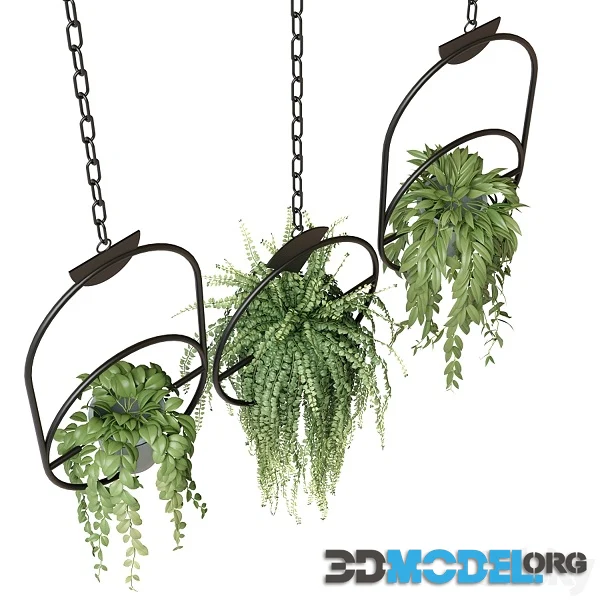
1. Choosing the right location
Ampel plants thrive in bright, indirect light. It is important to place them in a location where they will receive enough light, but avoid direct sunlight, as it can cause their leaves to burn. Consider hanging them near a window or a well-lit area in your home.
2. Watering
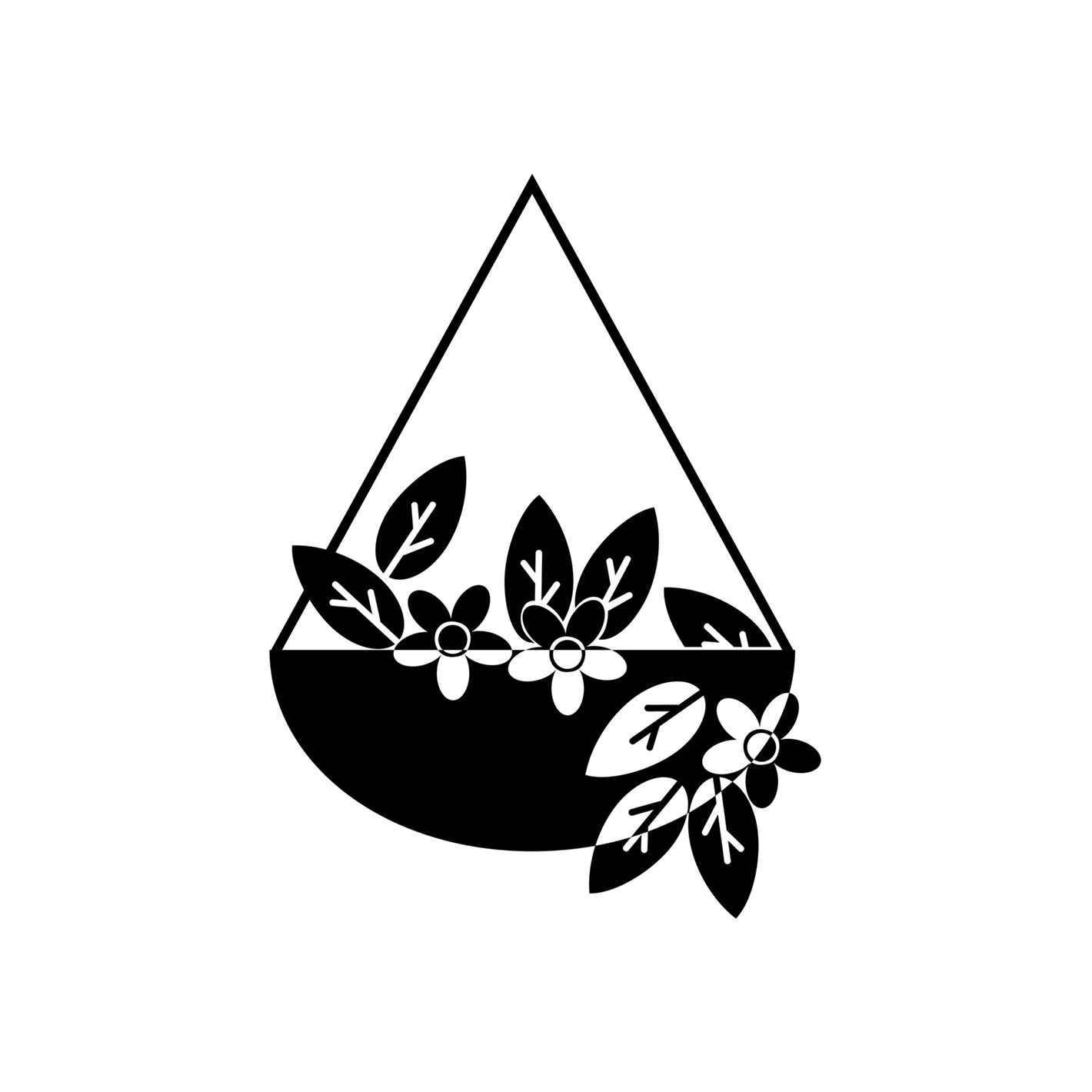
Proper watering is crucial for the health of ampel plants. They prefer a moderately moist soil, so avoid overwatering or letting the soil dry out completely. It is better to water them when the top inch of the soil feels dry to the touch. Remember to water evenly and thoroughly, allowing the water to drain out of the bottom of the pot.
3. Fertilizing
Ampel plants benefit from regular fertilizing to promote healthy growth and abundant flowering. Use a balanced water-soluble fertilizer once a month during the growing season (spring and summer). Follow the instructions on the fertilizer packaging for the correct dosage.
4. Pruning
Regular pruning is essential to maintain the shape and appearance of ampel plants. Remove any dead or yellowing leaves, as well as any stems that are growing in a downward direction. Trimming back long stems can help promote branching and create a fuller, more compact plant.
5. Support and Hanging
As ampel plants grow, they will require support to prevent their stems from trailing on the ground. Consider using a hanging basket or a pot with a built-in trellis to support their trailing growth. Make sure to secure the pot or basket properly to prevent it from falling.
6. Dealing with pests
Ampel plants can be prone to pests such as aphids, mealybugs, and spider mites. Regularly inspect your plants for any signs of infestation, such as sticky leaves, webs, or small insects. If you notice any pests, treat the plant with an appropriate insecticidal soap or neem oil spray.
7. Temperature and humidity
Ampel plants prefer temperatures between 65°F (18°C) and 80°F (27°C), so try to keep them in a room with a stable temperature within this range. They also enjoy humidity, so misting them with water or placing a tray filled with water near the plants can help increase humidity levels.
8. Repotting
As ampel plants grow, they may outgrow their current pot. When you notice the roots starting to become crowded or growing out of the drainage holes, it is time to repot the plant into a slightly larger pot with fresh potting soil. This will provide the plant with more space to grow and access to fresh nutrients.
By following these essential care tips, you can ensure that your ampel plants will thrive and create stunning hanging designs in your home or garden.
Design Ideas for Hanging Ampel Plants
Hanging ampel plants can add a stunning touch to any outdoor or indoor space. Whether you have a small balcony, a vast garden, or a spacious living room, these versatile plants can be incorporated into your design in various ways. Here are some design ideas to inspire you:
- Vertical Garden: Create a lush green wall by hanging multiple ampel plants at different heights. This will not only add a touch of nature to your space but also act as a natural room divider.
- Cascading Effect: Hang ampel plants from a high point, such as a pergola or a tall tree, to create a cascading effect. This design idea adds depth and visual interest to your space.
- Layered Look: Hang ampel plants in a layered arrangement using different levels of hooks or hanging baskets. This design idea creates depth and dimension, making your space look more dynamic.
- Use of Color: Choose ampel plants with vibrant flowers or foliage to add pops of color to your space. Consider complementing or contrasting colors to create a visually striking design.
- Grouping: Hang multiple ampel plants together in a cluster to create an eye-catching display. You can mix and match different plant varieties for a diverse and visually appealing arrangement.
- Go Unique: Experiment with different types of materials for hanging your ampel plants, such as macrame hangers or vintage containers. This will add a unique and personal touch to your design.
- Indoor Oasis: Hang ampel plants near windows, skylights, or glass doors to bring a touch of nature indoors. This design idea not only enhances the aesthetics but also helps improve air quality.
Remember to consider the lighting and maintenance requirements of the ampel plants you choose to ensure their long-term health and beauty in your design. With these design ideas, you can create stunning hanging ampel plant arrangements that will transform your space into a green oasis.
Enhancing Your Outdoor Space with Ampel Plants
Introduction
Adding ampel plants to your outdoor space can transform it into a lush and beautiful oasis. These hanging plants are perfect for creating stunning designs and adding a touch of greenery to your patio, balcony, or garden. With their cascading growth habit, ampel plants can provide a visually appealing display that is sure to impress.
Choosing the Right Ampel Plants
When selecting ampel plants for your outdoor space, it’s important to consider the specific needs and requirements of each plant. Some popular varieties include ivy, ferns, petunias, and trailing succulents. Each of these plants has its own unique characteristics, so be sure to choose ones that will thrive in your particular climate and sunlight conditions.
Creating Hanging Designs
Once you have chosen your ampel plants, it’s time to get creative with your hanging designs. Consider using a variety of different plant species to add depth and texture to your display. You can hang them in baskets, pots, or even create a vertical garden by attaching them to a trellis or wall.
When arranging your plants, make sure to space them out evenly and consider their growth habits. Some plants may need more space to spread out, while others can be planted closer together for a lush and full look.
Caring for Your Ampel Plants
Proper care is essential to ensure the health and longevity of your ampel plants. Here are some tips to keep in mind:
- Watering: Ampel plants generally require regular watering to keep their soil moist. However, be careful not to overwater, as this can lead to root rot.
- Sunlight: Most ampel plants prefer bright, indirect sunlight. Be sure to place them in a location where they will receive adequate light without being exposed to harsh direct sunlight.
- Fertilizing: Regular fertilizing can help your ampel plants thrive. Use a balanced liquid fertilizer according to the instructions on the label.
- Pruning: Trim any dead or damaged leaves to keep your ampel plants looking their best. You can also prune them to maintain their shape and encourage bushier growth.
Conclusion
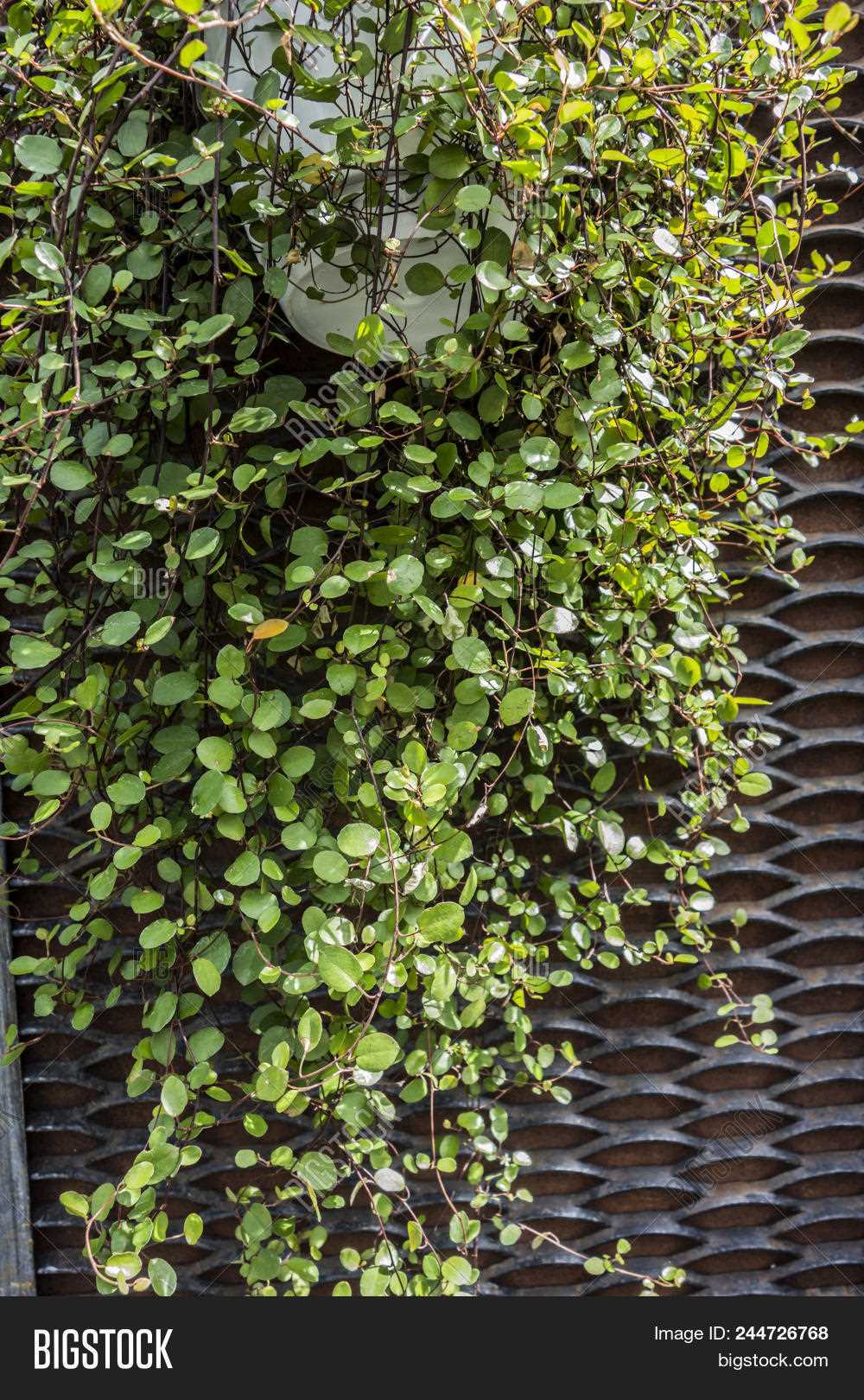
By incorporating ampel plants into your outdoor space, you can create a stunning and vibrant display that will enhance the beauty of your home. Whether you hang them from your porch, balcony, or garden, ampel plants are sure to bring life and color to any area. With proper care and creativity, you can transform your outdoor space into a botanical paradise.
Mixing and Matching Ampel Plants for Visual Impact
When it comes to creating stunning hanging designs with ampel plants, mixing and matching different varieties can add visual impact and make your displays truly eye-catching. By combining plants with contrasting colors, textures, and growth habits, you can create a dynamic and interesting arrangement that will be sure to grab attention.
1. Consider Colors
One of the easiest ways to create visual impact is by choosing ampel plants in different colors. Opt for a mix of vibrant hues, such as deep purples, bright pinks, and sunny yellows, to create a striking and eye-catching display. Alternatively, you can create a more harmonious look by choosing plants in similar tones, such as various shades of green or different pastel colors.
Tip: When selecting ampel plants, consider the color of their flowers as well as the color and texture of their foliage. This will allow you to create a multi-dimensional display with depth and variety.
2. Play with Textures
In addition to color, the texture of ampel plants can greatly impact the visual appeal of your hanging designs. Combine plants with different leaf shapes and textures to create an intriguing and visually appealing arrangement. For example, mix plants with broad, glossy leaves with those that have small, delicate foliage for a contrast in texture.
Tip: Consider adding trailing plants with delicate, cascading foliage for an added element of visual interest.
3. Vary Growth Habits
Another way to add visual impact to your hanging designs is by combining ampel plants with different growth habits. Choose plants that have a range of growth forms, such as vining, trailing, or bushy. This will create a sense of movement and depth in your displays.
Tip: Remember to consider the growth habits and potential size of the plants you choose. Be mindful of their eventual height and spread to ensure they won’t overcrowd or overshadow each other.
4. Mix and Match Container Styles
To enhance the visual impact of your ampel plant arrangement, don’t forget to consider the container they are planted in. Mixing and matching different container styles can add an element of contrast and visual interest. Try pairing delicate, hanging baskets with more geometric or modern containers for an unexpected twist.
5. Experiment and Have Fun!
When it comes to creating stunning hanging designs with ampel plants, the most important thing is to experiment and have fun! Don’t be afraid to try different combinations and arrangements until you find the perfect mix. Trust your instincts and let your creativity shine.
Tip: Consider creating a focal point by arranging a larger, show-stopping ampel plant in the center, and surrounding it with smaller, complementary varieties.
In conclusion, mixing and matching ampel plants is a great way to create visual impact in your hanging designs. By considering colors, textures, growth habits, and container styles, you can create dynamic and eye-catching arrangements that are sure to impress. So go ahead and get creative with your ampel plant displays!
Creating a DIY Ampel Plant Display
Adding ampel plants to your home or garden is a wonderful way to bring life and beauty to any space. Creating a DIY ampel plant display can be a fun and rewarding project that allows you to showcase your creativity while adding a touch of nature to your environment.
Choosing Your Ampel Plants
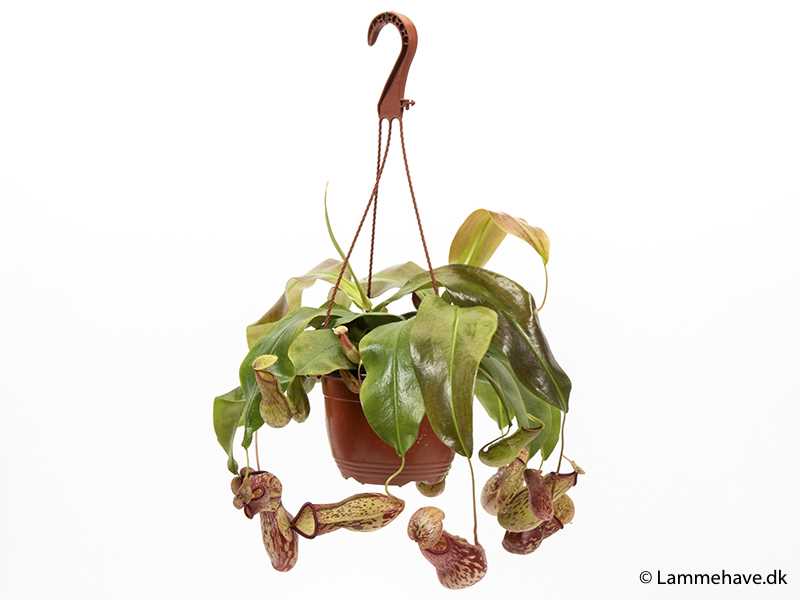
The first step in creating a DIY ampel plant display is choosing the right plants for your design. Ampel plants, also known as trailing or hanging plants, have long, flowing foliage that cascades down from hanging baskets or pots. Some popular ampel plant options include:
- English Ivy
- String of Pearls
- Spider Plant
- Golden Pothos
- Trailing Petunias
Consider the lighting conditions in the area where you plan to display your ampel plants, as different plants have varying light requirements. Some species thrive in bright, indirect light, while others can tolerate lower light levels.
Selecting the Right Containers
Once you have chosen your ampel plants, it’s time to select the right containers for your DIY display. Hanging baskets are a popular choice, as they allow the plants to cascade down naturally. Look for baskets with a sturdy construction and good drainage to prevent water from pooling and causing root rot.
In addition to hanging baskets, you can also use decorative pots or vases with trailing plants. These can be placed on shelves or suspended from the ceiling using macrame hangers or hooks.
Arranging Your Ampel Plants
Before planting your ampel plants, consider the overall design and arrangement of your display. You can create a visually appealing display by using plants of varying heights and colors. Place taller, more upright plants in the center or at the back, and surround them with trailing plants to create a cascading effect.
You can also mix different types of ampel plants for added interest. For example, combine ivy and string of pearls for a lush, textured look.
Maintaining Your DIY Ampel Plant Display
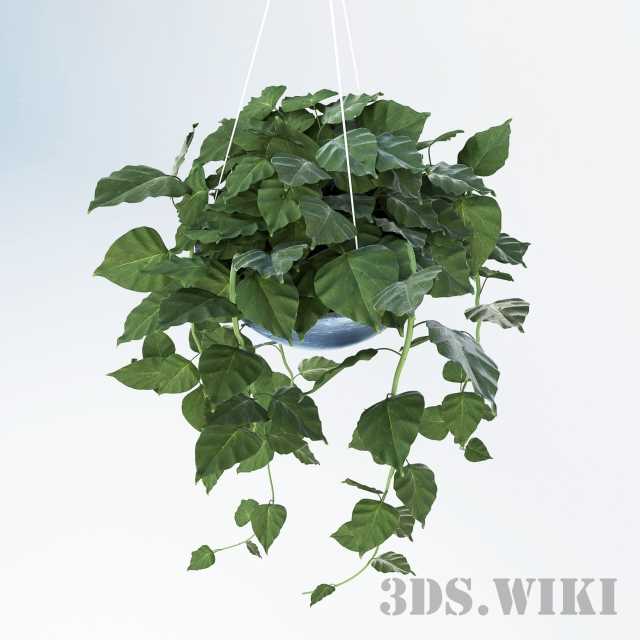
Proper care is essential for the health and longevity of your ampel plant display. Make sure to water your plants regularly, allowing the soil to dry slightly between waterings. Be careful not to overwater, as this can lead to root rot.
Depending on the specific needs of your ampel plants, you may also want to consider fertilizing periodically to promote healthy growth. Follow the instructions on the fertilizer packaging for best results.
Monitor your plants for signs of pests or diseases, and take appropriate action if necessary. Some common pests that can affect ampel plants include spider mites and aphids.
Creating a DIY ampel plant display is a great way to add beauty and greenery to your home or garden. With the right plants, containers, and arrangement, you can create a stunning display that will be the envy of all who see it.
Troubleshooting Common Issues with Ampel Plants
1. Overwatering
One common issue with ampel plants is overwatering. These plants don’t require frequent watering and can suffer if they are given too much moisture. Symptoms of overwatering may include yellowing leaves, root rot, or a soggy appearance to the soil.
To solve this issue, make sure you are allowing the soil to dry out between waterings. Only water the plant when the top inch of soil feels dry to the touch. Additionally, be sure to choose a well-draining potting mix and a pot with drainage holes to prevent water from sitting in the roots.
2. Underwatering
On the other hand, underwatering can also be a problem for ampel plants. If the plant is not given enough water, it may wilt and have dry, crispy leaves.
To remedy this issue, check the soil moisture regularly and water when the top inch of soil feels dry. When watering, make sure to thoroughly soak the soil and allow any excess water to drain away.
3. Lack of Light
Ampel plants generally thrive in bright, indirect light. If they are not receiving enough light, they may become leggy, have small leaves, or fail to bloom.
To address this issue, place your ampel plants in a location where they can receive bright, indirect light for the majority of the day. This can be near a window with filtered sunlight or under grow lights.
4. Pest Infestations
Like any other houseplant, ampel plants can be susceptible to pest infestations such as mealybugs, aphids, or scale insects. Signs of infestation may include sticky residue on the leaves, yellowing or wilting leaves, or visible pests on the plant.
If you notice pests on your ampel plant, it’s important to take immediate action. You can try wiping the leaves with a mild soap and water solution or using an insecticidal soap or oil to treat the infestation. In severe cases, you may need to isolate the plant or consult a professional for further assistance.
5. Nutrient Deficiencies
If your ampel plants are not receiving proper nutrition, they may exhibit stunted growth, yellowing leaves, or a lack of flowers.
To address this issue, make sure to fertilize your ampel plants regularly during the growing season. Choose a balanced fertilizer specifically formulated for houseplants and follow the recommended dosage instructions. Additionally, consider repotting your plant every year or two to provide it with fresh, nutrient-rich soil.
6. Incorrect Temperature or Humidity
Ampel plants thrive in temperatures between 65-80°F (18-27°C) with moderate humidity. Extreme temperatures or low humidity levels can lead to stress and poor growth.
To provide the appropriate environment for your ampel plants, avoid placing them near drafty windows or heating/cooling vents. If your home has low humidity, you can increase it by using a humidifier or placing a tray of water near the plant.
7. Incorrect Pruning
Improper pruning can also be a common issue with ampel plants. Pruning is important for maintaining shape and encouraging healthy growth, but it’s crucial to know when and how to prune these plants.
Before pruning, make sure to research the specific care requirements of your ampel plant. Some plants may need to be pruned after blooming, while others can benefit from regular trimming. Always use clean, sharp pruning shears, and remove any dead, damaged, or overcrowded growth.
Conclusion
By addressing these common issues and providing the necessary care, you can ensure your ampel plants thrive and create stunning hanging designs in your home or garden.
Q&A:
What are ampel plants and how can they be used in hanging designs?
Ampel plants are trailing or climbing plants that are ideal for creating stunning hanging designs. They can be used in hanging baskets, pots, or even mounted on walls to add color and texture to a space. These plants have long stems that cascade down, creating a beautiful waterfall effect.
What are some popular ampel plants for hanging designs?
Some popular ampel plants for hanging designs include English ivy, spider plant, pothos, Swedish ivy, and trailing petunias. These plants have long, trailing stems that create a stunning visual display when they are hung from baskets or pots.
How do you care for ampel plants in hanging designs?
When caring for ampel plants in hanging designs, it is important to provide them with adequate water and sunlight. These plants typically prefer bright, indirect light and should be watered when the top inch of soil feels dry. Fertilizing once a month during the growing season can also help to keep these plants healthy and vibrant.
Can ampel plants be grown indoors?
Yes, ampel plants can be grown indoors. They are well-suited to hanging baskets or mounted on walls near bright windows. It’s important to choose varieties that thrive in indoor conditions and provide them with appropriate care, including the right amount of water and sunlight.
What are some tips for creating stunning hanging designs with ampel plants?
Some tips for creating stunning hanging designs with ampel plants include choosing a variety of plants with different textures and colors, using a combination of trailing plants and upright plants for a more dynamic look, and ensuring that the hanging vessels or pots have proper drainage to prevent waterlogging. It’s also important to consider the weight of the plants and choose sturdy hanging structures.
Video:
Amazing Hanging Plants Ideas | Indoor Hanging Plants and Planters Making at Home //GREEN PLANTS







